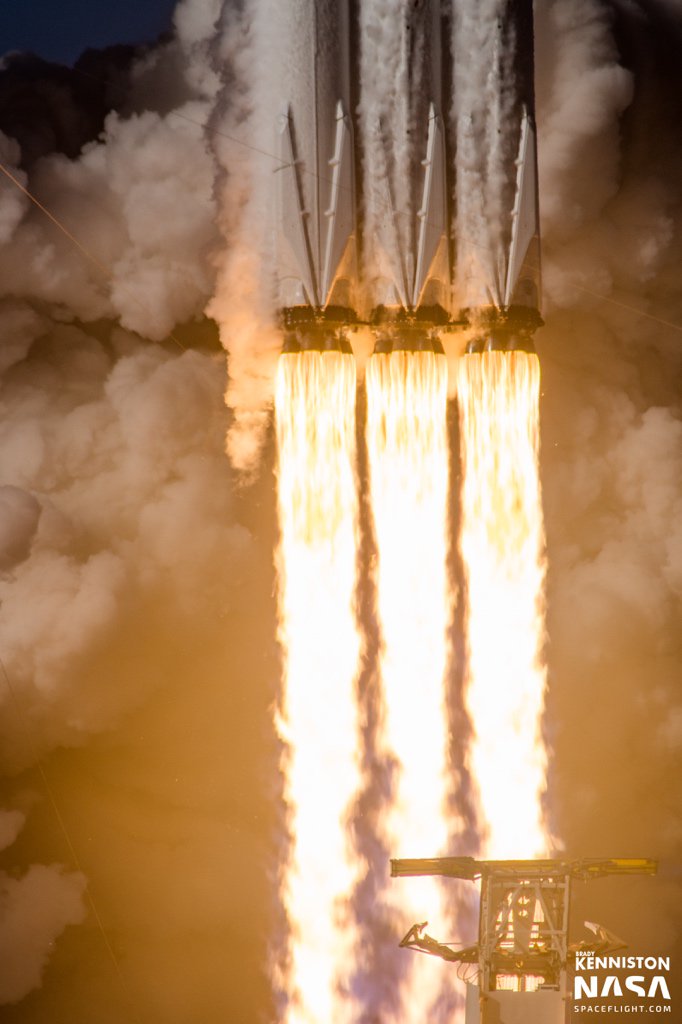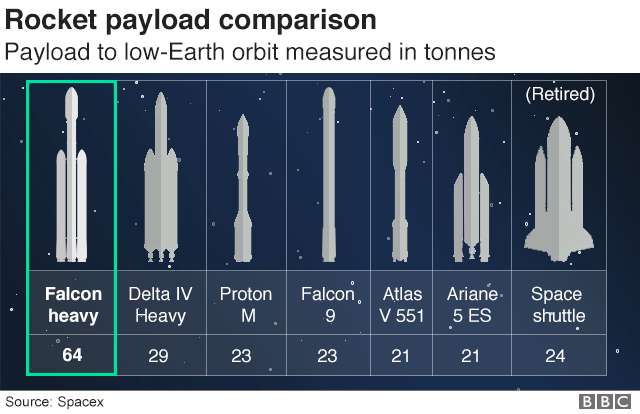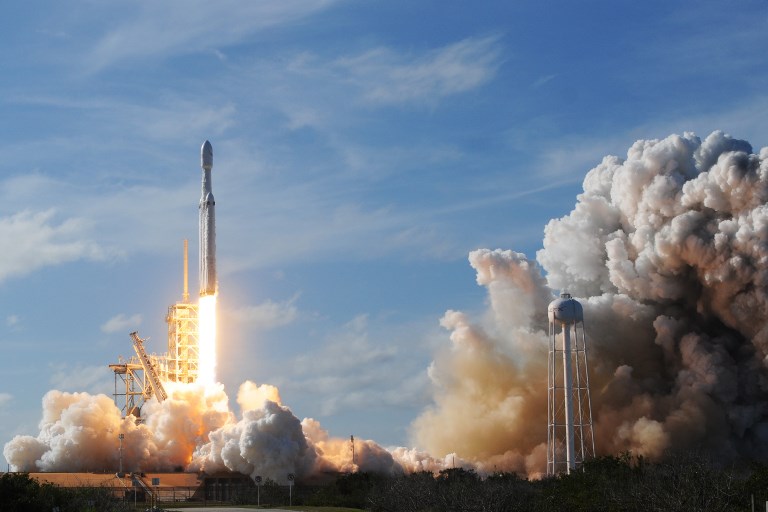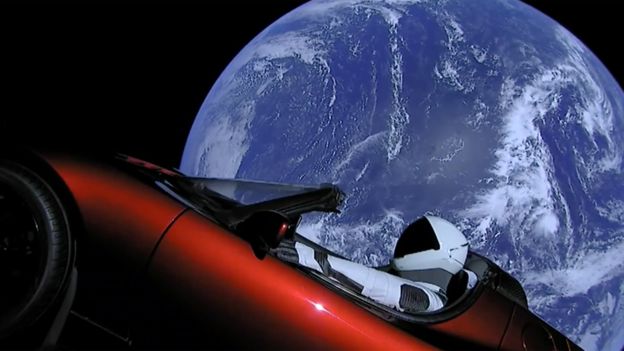
Elon Musk is founder of the private aerospace company SpaceX, which – on Tuesday, February 6, 2018 – successfully launched the world’s most powerful new space rocket, the Falcon Heavy. He’s also an inveterate tweeter, and a pleasure to follow on Twitter. The tweets below, shared with his nearly 19 million Twitter followers, gave us space fans the kinds of insights we used to only dream about.
Yesterday’s exciting and admittedly risky launch, SpaceX says, could mean game over for its private space company rivals. The Falcon Heavy will provide the United States a heavy-lift capability in space not seen since the Saturn V rockets of the Apollo era.
About 2.5 hours to T-0 for Falcon Heavy. Watch sim for highlight reel of what we hope happens. Car actually takes 6 months to cover 200M+ miles to Mars https://t.co/tC3B26r651
— Elon Musk (@elonmusk) February 6, 2018
Prior to the launch, Musk had told reporters that the challenges of developing the new rocket meant the chances of a successful first launch might be only 50-50. He said after the event:
I had this image of just a giant explosion on the pad, a wheel bouncing down the road. But fortunately that’s not what happened.

Flight profile #FalconHeavy #SpaceX pic.twitter.com/LlfWXqUaLP
— Elon Musk (@elonmusk) February 6, 2018
Then, on February 6, after all the planning and dreaming … it was time for the ambitious and risky test launch.
Launch auto-sequence initiated (aka the holy mouse-click) for 3:45 liftoff #FalconHeavy
— Elon Musk (@elonmusk) February 6, 2018

Screams and cheers erupted at Cape Canaveral, Florida, as the massive rocket fired its engines and lifted into the sky. The Falcon Heavy is essentially three of SpaceX’s workhorse Falcon 9 vehicles strapped together. In a typically Musk-ian touch of whimsy, the Falcon’s upper stage and test payload is Musk’s own old $100,000 cherry red Tesla Roadster sports car, and a dummy in its driver’s seat called Starman rocking to David Bowie’s Life on Mars.
Camera views from inside the payload fairing #FalconHeavy https://t.co/vQaz2yJ5yY
— Elon Musk (@elonmusk) February 6, 2018

SpaceX has been working hard to bring the boost stages – the lower segments of the rocket – back to Earth in controlled landings. Here are two of them setting down.
Then the focus shifted back to the upper stage and its attempted burn to carry it to Mars’ orbit and beyond.
Upper stage restart nominal, apogee raised to 7000 km. Will spend 5 hours getting zapped in Van Allen belts & then attempt final burn for Mars.
— Elon Musk (@elonmusk) February 6, 2018
View from SpaceX Launch Control. Apparently, there is a car in orbit around Earth. pic.twitter.com/QljN2VnL1O
— Elon Musk (@elonmusk) February 6, 2018
Live view of Starman https://t.co/gvSlztlE6l
— Elon Musk (@elonmusk) February 6, 2018
Currently over Australia ???????? pic.twitter.com/HAya3E6OEJ
— Elon Musk (@elonmusk) February 6, 2018
And finally … a successful burn, and Starman was outward bound!
Third burn successful. Exceeded Mars orbit and kept going to the Asteroid Belt. pic.twitter.com/bKhRN73WHF
— Elon Musk (@elonmusk) February 7, 2018
In fact, the red Tesla Roadster carrying Starman was traveling faster than expected. Read more: Where is Elon Musk’s car going?
Still … what a day.
Can’t get enough? Check out the 30-minute video, below, from SpaceX. It’s an updated version of Tuesday’s live webcast and includes both side booster cameras and additional Starman views.
Bottom line: Tweets and video from SpaceX and Elon Musk on Tuesday’s successful launch of the Falcon Heavy. Go SpaceX!











